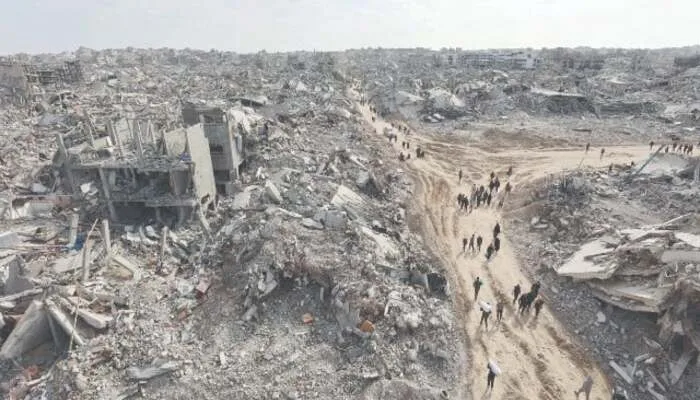DEIR EL-BALAH, GAZA: A long-awaited truce between Israel and Hamas took effect on Sunday, allowing displaced Gazans to return home after months of relentless conflict. The truce began three hours later than planned due to disagreements over the release of hostages.
Hamas released three Israeli women hostages—Romi Gonen, Emily Damari, and Doron Steinbrecher—on the first day of the truce. The women crossed into Israeli territory on Sunday afternoon to reunite with their families. In exchange, Israel began releasing dozens of Palestinian prisoners.
The ceasefire, brokered by Qatar, the United States, and Egypt, is set to last 42 days. During this period, humanitarian aid will flow into Gaza, and more hostages and prisoners will be freed. An Egyptian source confirmed the entry of 260 trucks carrying aid and 16 fuel trucks into Gaza on Sunday.
Israeli officials reported that of the 251 hostages initially taken by Hamas on October 7, 91 remain in Gaza. The agreement includes the return of 33 Israeli hostages during the initial phase of the truce.
Gazans Return to Destroyed Homes Amid Aid Efforts
Thousands of displaced Gazans began returning to their home areas on Sunday, carrying whatever belongings they had. In Jabalia, many returned to scenes of utter destruction. “There is nothing left in the north worth living for,” said Walid Abu Jiab, who described the apocalyptic landscape.
Northern Gaza has been hit the hardest, with severe shortages of food, water, and shelter, according to aid workers. In Khan Yunis, people celebrated their upcoming return to Gaza City despite knowing the devastation that awaited them.
The United Nations said the first trucks carrying humanitarian aid entered Gaza just minutes after the ceasefire began. Jonathan Whittall, interim chief of the UN’s OCHA humanitarian agency for the Palestinian territories, confirmed a “massive effort” was underway to deliver aid across the territory.
Israel-Hamas Ceasefire to Begin Sunday Morning
Global Reactions and Challenges Ahead
World leaders welcomed the ceasefire and urged both sides to honor its terms. UN Secretary-General Antonio Guterres emphasized the importance of removing obstacles to humanitarian aid. US President Joe Biden expressed relief that the guns in Gaza had fallen silent, calling the truce a step forward after months of pain and loss.
However, challenges remain. Israeli Prime Minister Benjamin Netanyahu described the ceasefire as temporary, warning that Israel could resume its military campaign if necessary. Hamas also stated that its adherence to the truce depends on Israel’s commitment.
The war, which began with Hamas’s October 7 attack—the deadliest in Israel’s history—has devastated Gaza. The attack killed 1,210 Israelis, while Israeli retaliation destroyed much of Gaza and resulted in over 46,900 deaths, according to the Hamas-run health ministry.
As the ceasefire progresses, both sides face immense pressure to maintain peace and support relief efforts.
Follow Day News on Google News, Instagram, YouTube, Facebook, Whats App, and TikTok for latest updates
